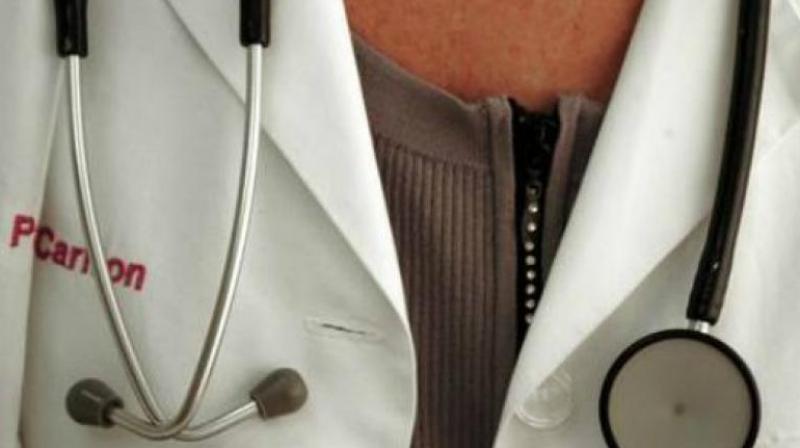Don’t self medicate for warts and corns

Have you ever had warts suddenly erupt on yoEur body, making you wonder what caused them in the first place? Or have painful corns on your feet and can’t wait to get rid of them?
Warts and corns are commonly occurring health problems that can be both unattractive and painful. But like most health issues, doctors advise that it is better not to self-medicate without understanding how they are caused and more importantly, know when to see a specialist.
Check if you have a wart
Warts are small lumps on the skin that feel firm and rough and appear on hands, knuckles, knees and fingers. They occur when the human papilloma virus infects the superficial layer of the skin, causing an excess amount of a hard protein called keratin to develop in the top layer of the skin. The extra keratin produces the rough, hard texture of a wart.
The good news is that warts are non-cancerous and usually go away on their own in one to five years. But on the flip side, they are contagious and can spread through close skin contact.
They can appear when a person cuts or damages their skin in some way or has low immunity, explains Dr Sajjan R. Agarwal of Rama Skin Clinic in Basheerbagh.
“Warts can spread by contact with the wart or when something touches it. They can range from being skin-coloured to dark, brown or grey-black. They can feel rough, flat or smooth and have spine-like projections or small spike-like growths on them,” says Dr Agarwal, who adds that they don’t go deep into the skin and are common in people with low immunity, when the body can't get rid of the infection.
Warts are usually isolated but can be confluent with four or five warts forming a bigger lesion. “They normally occur on skin that is smooth and likely to be wet, like hands, feet, sides of fingers or mouths. They can occur even in the genitals,” adds Dr Agarwal.
Occurrence and treatment
Warts are more common among children, with nearly one-third of children estimated to have them. But they usually clear up within two years as their immunity becomes stronger.
Sometimes, hundreds of them can appear in adults with HIV or AIDS, or those with a hereditary disorder. Yet, they are only painful if they occur on the soles of the feet or get infected.
Treatment for warts that are large, numerous or in sensitive areas includes cryotherapy, surgery, laser treatment, electrocautery, photodynamic therapy, chemical treatments and topical creams.
“It is a harmless condition that can be treated very easily by a doctor. Most of the time, they may need a follow-up course in two years. However, if left alone, 90 per cent of warts go away on their own without any treatment. But there is always a possibility of reoccurrence even if removed as the virus may remain in the skin,” says Dr Agarwal, who recommends seeing a doctor especially if a wart keeps coming back, is very large or painful, bleeds or changes in appearance.
Prevention
To reduce the risk of catching or spreading warts, doctors advise against touching other people’s warts, using other people’s towels, washcloths or other personal items.
Doctors also caution against sharing shoes and socks and advise one to refrain from scratching the warts as it can cause them to spread.
It’s also best to wear slippers or sandals at communal pools, cover warts with a waterproof band-aid when swimming, and wear socks or gloves in places such as the gym.
Dr Agarwal adds, “They should keep their hands as dry as possible and wash their hands thoroughly after touching a wart.”
More on corns
Most of us have had corns on the feet — the hard or thickened areas of skin that can be painful. They are usually not serious but there are some basic things one can do to get rid of them. But for people with diabetes, heart disease or problems with circulation, it is best not to self-medicate and see a medical practitioner instead, caution doctors.
Corns are caused by constant friction in a skin area such as feet, toes and hands. The small lumps of hard skin develop deep inside the skin and have a flat appearance outside. They can be painful when they are deep and press against our nerve endings.
They occur because of standing in one place for a long time, walking, running barefoot, wearing the wrong footwear or due to a defect in the arch of the foot.
Prevention and treatment
“Always wear shoes with a thick pad and consult an orthopaedic surgeon to treat an arch in the foot. Simple things like a pedicure also works as it removes tissues on the sole and is a hygienic practice,” says Dr Agarwal.
Corns are only serious if they get infected, in which case a surgery may be advised.
Some other ways to prevent them is to wear thick, cushioned socks and wide, comfortable shoes with a low heel and soft soles that do not rub against the feet; and soaking corns in warm water to soften them before using a pumice stone or foot file to remove the hard skin. It’s also advisable to moisturise the feet to help keep the skin soft.
However, people should not try to cut off corns themselves and must see a doctor if it bleeds, has pus or discharge and has not improved after treating it at home for three weeks.

